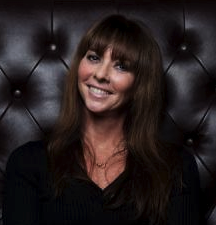CIRCL perspectives offer a window into the different worlds of various stakeholders in the cyberlearning community — what drives their work, what they need to be successful, and what they think the community should be doing. Share your perspective.
Lauren Birney is a professor STEM Education at PACE University and Director of the STEM Collaboratory NYC™. She leads the NSF-funded CCERS project, which connects teaching and learning through the lens of technology to the restoration of New York Harbor in New York City.
How did you get into cyberlearning?
I’m originally from Southern California where I studied biology and chemistry at the University of San Diego. As an All- American Swimmer, I possess as strong innate and distinct motivation to succeed along with a very competitive personality. Science, and what drives it, has always been an interest of mine. I was interested in science because I was premed, and then I went to Oxford and was exposed to experiential learning and various real time explorations centered around Art, Architecture, Drama and Theater. Consequently, I came back and said to my dad, “I want to be a professor!” I earned my teaching credential and taught in inner city San Diego for 18 years. Working in conjunction with student teachers, two professors from San Diego State approached me and asked if I’d like to collaborate on writing grants for kids in nanotechnology and biotechnology, Dr. Larry Alfred and Dr. Paul Paolini. Because of their experience, expertise and training, we were awarded grants to help inner city students learn STEM skills while gaining internship experiences at Scripps and Seaworld and the San Diego Zoo. It was amazingly rewarding for everyone involved.
Eventually, I traveled East and resided in New York City, and I wanted to replicate this idea. Currently, in addition to acting as Director of the STEM Collaboratory NYC™, I serve as PI leading the Curriculum + Community Enterprise for Restoration Science (CCERS) project, This project enables teachers to engage their students in hands-on environmental science and restoration ecology in and around New York Harbor while gaining the necessary research skills and techniques required to be successful STEM students.
What are the important pieces of the CCERS project?
Technology really drives kids interest in the project and helps them become interested in science. It’s about the environment, too. Sometimes we feel like our environment is heavily challenged. What do we do? How do we fix that?
Without the technology piece, this project wouldn’t have the success and carry the ingenuity it does.. There wouldn’t be the opportunity for this magnitude of growth. This can’t just be a virtual thing; it’s important to have the kids go out and see the environment and that it’s a part of their world. I remember going out on a fishing boat in the 4th grade. This New York Times photographer on the boat took my picture, so I was in the paper holding up this enormous halibut. I remember that still! I want to replicate experience like that for all students.
It’s also about accessibility, and providing kids with opportunities they never would have had, especially in the inner city. I lived 8 miles from the beach in San Diego. Some kids would say “I’ve never been to the beach” so I’d say, “You know what? We’re going to the tide pools Saturday morning at 10 am. Here’s some bus tokens; meet me there.” It’s the same philosophy here in New York City. Lets have fun along the way and allow students to get dirty and play while they learn. Learning should be fun, intriguing and innovative. It should capture their interest and stimulate their senses so they can say “What if?” Additionally, there is a component that is challenging in science; how do you make it so that it’s challenging yet fun? We need more women and underrepresented students in STEM. Accessibility, opportunity and support structures allow for this to happen. We’re all on the same playing field and all want success from wherever we are.
What are you struggling with and how could the cyberlearning community help you?
I struggle with how we allow for citizens to become involved more in the project. Maybe the cyberlearning piece could help here. How do we create the opportunity for kids to get access to materials and computers and technology that they don’t have in NYC public schools? Where are the VC people who can help provide that? It happened in New Jersey with Mark Zuckerberg’s donations. Can it happen here, too? For example, most of the kids have digital devices, like smartphones, but they need devices that are waterproof. They could take their smartphones out to the water to enter data, but what if they drop them in the water?
It would be great if we had some businesses that could provide support. Here on Wall Street I see Deutsche Bank, J.P. Morgan, and others and I think, “Why aren’t these people involved in supporting schools with some kind of funding or technology?” Give back 1% to kids. They got where they are because of education. My dream and challenge is how to get them involved. As I run through Wall Street each morning, I think “How can I get all of you involved in education, in some small way to make an impact on a child’s life.” Let’s have everyone take ownership, pride and interest in today’s educational challenge and find ways to support those challenges while bettering the environment! Think of how much fun that could be!

